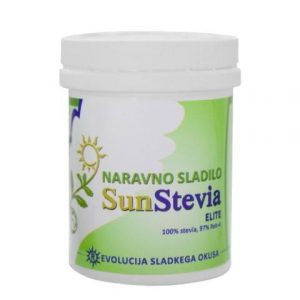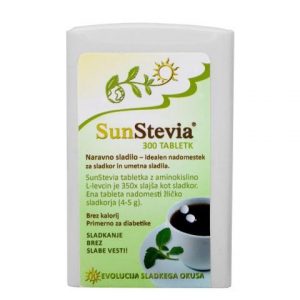Stevija naravno sladilo – raziskave in študije
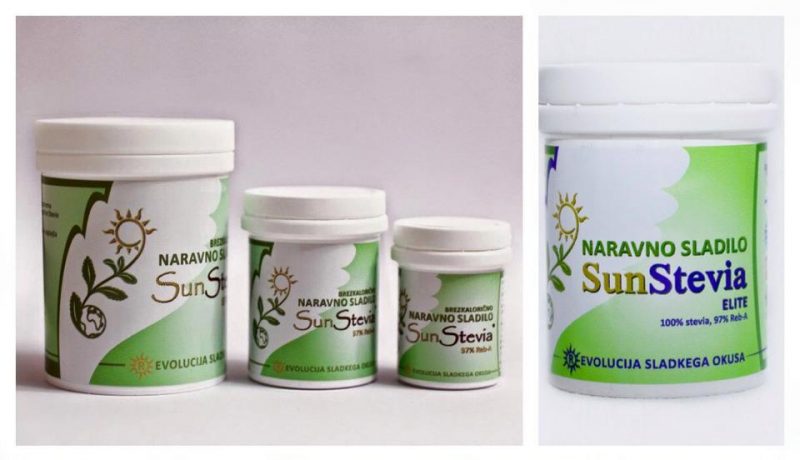
Vas zanima, kaj znanstvene raziskave pravijo o steviji? Mnogo študij in znanstvenih publikacij potrjuje, da so izvlečki listov rastline stevije rebaudiana zdravju neškodljivi in nimajo strupenih učinkov na živo celico oz. so popolnoma varni za telo in imajo mnogo blagodejnih in pozitivnih učinkov na naš organizem.
Iz znanstvenih glasil in knjig smo izbrali najbolj odmevne študije, sicer pa boste na internetu našli veliko informacij o rastlini steviji in njenih sladilih.
Naša lista zunanjih povezav vsebuje raziskave, študije in uradna mnenja o steviji, za katera smo sklepali, da vam bodo uporabna in zanimiva.
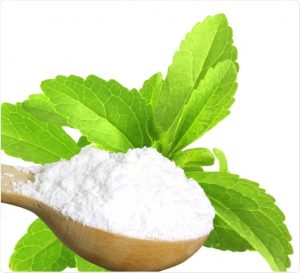
Izsledki raziskav so pokazali, da steviozid (steviol glikozidi) vpliva na znižanje krvnega tlaka, znižanje krvnega sladkorja in boljši metabolizem glukoze v krvi.
Študije so tudi pokazale, da stevija znižuje previsok krvni tlak, na normalen krvni tlak pa ne vpliva.
A double-blind placebo-controlled study of the effectiveness and tolerability of oral stevioside in human hypertension.
Division of Cardiovascular Medicine, Taipei Medical College and affiliated Taipei Wan Fang Hospital, Taiwan
http://www.ncbi.nlm.nih.gov/pubmed/10971305: http://ajpendo.physiology.org/content/292/6/E1906.full
Stevioside is a natural plant glycoside isolated from the plant Stevia rebaudiana which has been commercialized as a sweetener in Japan for more than 20 years. Previous animal studies have shown that stevioside has an antihypertensive effect. This study was to designed to evaluate the effect of stevioside in human hypertension. METHODS: A multicentre, randomized, double-blind, placebo-controlled study was undertaken. This study group consisted of 106 Chinese hypertensive subjects with diastolic blood pressure between 95 and 110 mmHg and ages ranging from 28 to 75 years with 60 subjects (men 34, women 26; mean +/- s.d., 54.1+/-3.8 years) allocated to active treatment and 46 (men 19, women 27; mean +/- s.d., 53.7+/-4.1 years) to placebo treatment. Each subject was given capsules containing stevioside (250 mg) or placebo thrice daily and followed-up at monthly intervals for 1 year. RESULTS: After 3 months, the systolic and diastolic blood pressure of the stevioside group decreased significantly (systolic: 166.0+/-9.4-152.6+/-6.8 mmHg; diastolic: 104.7 +/- 5.2-90.3+/-3.6 mmHg, P<0.05), and the effect persisted during the whole year. Blood biochemistry parameters including lipid and glucose showed no significant changes. No significant adverse effect was observed and quality of life assessment showed no deterioration. CONCLUSIONS: This study shows that oral stevioside is a well tolerated and effective modality that may be considered as an alternative or supplementary therapy for patients with hypertension.
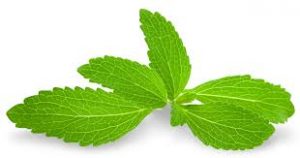
K analizi je prostovoljno pristopilo 106 pacientov, ki so bili razdeljeni na aktivno in kontrolno skupino.
V času poizkusa, ki je trajal eno leto, je aktivna skupina jemala 3 x 250 mg steviozida dnevno.
Povzetek študije: Po dveh tednih je prišlo do pomembnih sprememb in padca krvnega tlaka ( zgornji krvni tlak – sistolični z 166 na 152 mmHg,; spodnji krvni tlak – diastolični s 104 na 90 mmHg).
Drugih sprememb ali stranskih vplivov na kvaliteto življenja ni bilo. Splošni zaključek je bil, da se ekstrakt stevie n steviozid lahko uporablja kot pomožno sredstvo pri povečanem krvnem pritisku.
Efficacy and tolerability of oral stevioside in patients with mild essential hypertension: A two-year, randomized, placebo-controlled study
Department of Medicine, Taipei Medical University–Wan Fang Hospital, Taipei City, Taiwan.
http://www.ncbi.nlm.nih.gov/pubmed/14693305
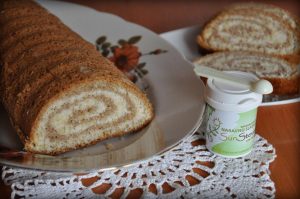 Benefits were also seen in a 2-year, double-blind, placebo-controlled study of 174 people with mild hypertension (average initial blood pressure of approximately 150/95). This study, performed by some of the same researchers, used twice the dose of the previous study: 500 mg 3 times daily. A reduction in blood pressure of approximately 6%-7% was seen in the treatment group as compared to the placebo group, beginning within 1 week and enduring throughout the entire 2 years. At the end of the study, 34% of those in the placebo group showed heart damage from high blood pressure (left ventricular hypertrophy), while only 11.5% of the stevioside group did, a difference that was statistically significant. No significant adverse effects were seen.
Benefits were also seen in a 2-year, double-blind, placebo-controlled study of 174 people with mild hypertension (average initial blood pressure of approximately 150/95). This study, performed by some of the same researchers, used twice the dose of the previous study: 500 mg 3 times daily. A reduction in blood pressure of approximately 6%-7% was seen in the treatment group as compared to the placebo group, beginning within 1 week and enduring throughout the entire 2 years. At the end of the study, 34% of those in the placebo group showed heart damage from high blood pressure (left ventricular hypertrophy), while only 11.5% of the stevioside group did, a difference that was statistically significant. No significant adverse effects were seen.
Antihyperglycemic Effects of Stevioside in Type 2 Diabetic Subjects 2004
Department of Endocrinology and Metabolism C, Aarhus University Hospital, Denmark.
http://www.ncbi.nlm.nih.gov/pubmed/14681845
Stevioside is present in the plant Stevia rebaudiana Bertoni (SrB). Extracts of SrB have been used for the treatment of diabetes in, for example, Brazil, although a positive effect on glucose metabolism has not been unequivocally demonstrated. We studied the acute effects of stevioside in type 2 diabetic patients. We hypothesize that supplementation with stevioside to a test meal causes a reduction in postprandial blood glucose. Twelve type 2 diabetic patients were included in an acute, paired cross-over study. A standard test meal was supplemented with either 1 g of stevioside or 1 g of maize starch (control). Blood samples were drawn at 30 minutes before and for 240 minutes after ingestion of the test meal. Compared to control, stevioside reduced the incremental area under the glucose response curve by 18% (P .013). The insulinogenic index (AUCi,insulin/AUCi,glucose) was increased by approximately 40% by stevioside compared to control (P < .001). Stevioside tended to decrease glucagon levels, while it did not significantly alter the area under the insulin, glucagon-like peptide 1, and glucose-dependent insulinotropic polypeptide curves. In conclusion, stevioside reduces postprandial blood glucose levels in type 2 diabetic patients, indicating beneficial effects on the glucose metabolism. Stevioside may be advantageous in the treatment of type 2 diabetes.
Izsledki raziskav, so pokazali da steviozid (steviol glikozidi) vplivajo na boljše izločanje hormona inzulina in dvig tolerance na glukozo.
Raziskava hipoglikemijskega učinka steviozida, ki jo je vodila skupina znanstvenikov leta 2000 na danski Univerzitetni kliniki na oddelku za endokrinologijo in metabolizem, je pokazala, da steviozid deluje direktno na beta celice trebušne slinavke. Dognali so, da le ta povzroča direktno iztiskanje inzulina iz beta celic oz. da steviozidi povzročajo izločanje inzulina iz trebušne slinavke.
Stevioside acts directly on pancreatic beta cells to secrete insulin: actions independent of cyclic adenosine monophosphate and adenosine triphosphate-sensitive K+-channel activity.
Department of Endocrinology and Metabolism, Aarhus University Hospital, Denmark
http://www.ncbi.nlm.nih.gov/pubmed/10690946
The natural sweetener stevioside, which is found in the plant Stevia rebaudiana Bertoni, has been used for many years in the treatment of diabetes among Indians in Paraguay and Brazil. However, the mechanism for the blood glucose-lowering effect remains unknown. To elucidate the impact of stevioside and its aglucon steviol on insulin release from normal mouse islets and the beta-cell line INS-1 were used. Both stevioside and steviol (1 nmol/L to 1 mmol/L) dose-dependently enhanced insulin secretion from incubated mouse islets in the presence of 16.7 mmol/L glucose (P < .05). The insulinotropic effects of stevioside and steviol were critically dependent on the prevailing glucose concentration, ie, stevioside (1 mmol/L) and steviol (1 micromol/L) only potentiated insulin secretion at or above 8.3 mmol/L glucose (P < .05). Interestingly, the insulinotropic effects of both stevioside and steviol were preserved in the absence of extracellular Ca2+. During perifusion of islets, stevioside (1 mmol/L) and steviol (1 micromol/L) had a long-lasting and apparently reversible insulinotropic effect in the presence of 16.7 mmol/L glucose (P < .05). To determine if stevioside and steviol act directly on beta cells, the effects on INS-1 cells were also investigated. Stevioside and steviol both potentiated insulin secretion from INS-1 cells (P < .05). Neither stevioside (1 to 100 micromol/L) nor steviol (10 nmol/L to 10 micromol/L) influenced the plasma membrane K+ adenosine triphosphate ((K+)ATP)-sensitive channel activity, nor did they alter cyclic adenosine monophosphate (cAMP) levels in islets. In conclusion, stevioside and steviol stimulate insulin secretion via a direct action on beta cells. The results indicate that the compounds may have a potential role as antihyperglycemic agents in the treatment of type 2 diabetes mellitus.
Effect of Stevia rebaudiana on glucose tolerance in normal adult humans.
Departamento de Farmacia-Bioquimica, Universidade de Maringa, Brazil
http://www.ncbi.nlm.nih.gov/pubmed/3651629 ; http://www.scielo.br/pdf/rbfar/v18n3/a05v18n3.pdf
The effect of aqueous extracts of Stevia rebaudiana leaves on a glucose tolerance test was investigated in 16 normal volunteers. Aqueous extracts of 5 grams of leaves were administered to volunteers at regular 6-h intervals for 3 days. Glucose tolerance tests were performed before and after extract administration. A second group of 6 normal volunteers who ingested an aqueous arabinose solution was also studied to eliminate possible stress effects. The extract of Stevia rebaudiana increased glucose tolerance. The extract significantly decreased plasma glucose levels during the test and after overnight fasting in all volunteers.
Lista zunanjih povezav in drugih virov:
1.Stevia. Raintree Nutrition Tropical Plant Database. http://www.rain-tree.com/stevia.htm . Updated January 22, 2007. Accessed January 5, 2010.
2. Tarantino LM. Agency Response Letter GRAS Notice No. GRN 000253. CFSAN/Office of Food Additive Safety. Food and Drug Administration web site. http: / / www.fda.gov / Food / FoodIngredientsPackaging / GenerallyRecognizedasSafeGRAS / GRASListings / ucm154989.htm . Published December 17, 2008. Updated June 18, 2009. Accessed November 20, 2009.
3. Bridel M, Lavielle R. Bull Soc Chim Biol . 1931;13:636-655.
4. Mauri P, Catalano G, Gardana C, Pietta P. Analysis of Stevia glycosides by capillary electrophoresis. Electrophoresis . 1996;17(2):367-371.
5. Mitsuhashi H, Ueno J, Sumita T. Studies on the cultivation of Stevia rebaudiana Bertoni. Determination of stevioside (author’s transl) [in Japanese]. Yakugaku Zasshi . 1975;95(1):127-130.
6. Shibata H, Sawa Y, Oka T, Sonoke S, Kim KK, Yoshioka M. Steviol and steviol-glycoside: glucosyltransferase activities in Stevia rebaudiana Bertoni—purification and partial characterization. Arch Biochem Biophys . 1995;321(2):390-396.
7. Samuelsson G. Drugs of Natural Origin . 3rd ed. Stockholm, Sweden: Swedish Pharmaceutical Press; 1992.
8. Kim KK, Sawa Y, Shibata H. Hydroxylation of ent-kaurenoic acid to steviol in Stevia rebaudiana Bertoni—purification and partial characterization of the enzyme. Arch Biochem Biophys . 1996;332(2):223-230.
9. D’Agostino M, De Simone F, Pizza C, Aquino R. Sterols in Stevia rebaudiana Bertoni [in Italian]. Boll Soc Ital Biol Sper . 1984;60(12):2237-2240.
10. Aquino RP, Behar I, Biondi A, De Simone F, Scalesse G. Isolation of the principal sugars of Stevia rebaudiana [in Italian]. Boll Soc Ital Biol Sper . 1985;61(9):1247-1252.
11. Mitsuhashi H, Ueno J, Sumita T. Studies on the cultivation of Stevia rebaudiana Bertoni. Determination of stevioside. II. (author’s transl) [in Japanese]. Yakugaku Zasshi . 1975;95(12):1501-1503.
12. Miyazaki Y, Watanabe H, Watanabe T. Studies on the cultivation of Stevia rebaudiana Bertoni. III. Yield and stevioside content of 2-year-old plants (author’s transl) [in Japanese]. Eisei Shikenjo Hokoku . 1978;(96):86-89.
13. Handro W, Hell KG, Kerbauy GB. Tissue culture of Stevia rebaudiana , a sweetening plant. Planta Med . 1977;32(2):115-117.
14. Kinghorn AD, Soejarto DD, Nanayakkara NP, et al. A phytochemical screening procedure for sweet ent-kaurene glycosides in the genus Stevia. J Nat Prod . 1984;47(3):439-444.
15. Soejarto DD, Kinghorn AD, Farnsworth NR. Potential sweetening agents of plant origin. III. Organoleptic evaluation of Stevia leaf herbarium samples for sweetness. J Nat Prod . 1982;45(5):590-599.
16. Jakinovich W Jr, Moon C, Choi YH, Kinghorn AD. Evaluation of plant extracts for sweetness using the Mongolain gerbil. J Nat Prod . 1990;53(1):190-195.
17. Yamamoto NS, Kelmer Bracht AM, Ishii EL, Kemmelmeier FS, Alvarez M, Bracht A. Effect of steviol and its structural analogues on glucose production and oxygen uptake in rat renal tubules. Experientia . 1985;41(1):55-57.
18. Lailerd N, Saengsirisuwan V, Sloniger JA, Toskulkao C, Henriksen EJ. Effects of stevioside on glucose transport activity in insulin-sensitive and insulin-resistant rat skeletal muscle. Metabolism . 2004:53(1):101-107.
19. Dyrskog SE, Jeppensen PB, Colombo M, Abudula R, Hermansen K. Preventative effects of a soy-based diet supplemented with stevioside on the development of the metabolic syndrome and type 2 diabetes in Zucker diabetic fatty rats. Metabolism . 2005;54(9):1181-1188.
20. Dyrskog SE, Jeppensen PB, Chen J, Christensen LP, Hermansen K. The diterpene glycoside, rebaudioside A, does not improve glycemic control or affect blood pressure after eight weeks treatment in the Goto-Kakizaki rat. Rev Diabet Stud . 2005;2(2):84-91.
21. White JR Jr, Kramer J, Campbell RK, Bernstein R. Oral use of a topical preparation containing an extract of Stevia rebaudiana and the chrysanthemum flower in the management of hyperglycemia. Diabetes Care . 1994;17(8):940.
22. Maki KC, Curry LL, Reeves MS, et al. Chronic consumption of rebaudioside A, a steviol glycoside, in men and women with type 2 diabetes mellitus. Food Chem Toxicol . 2008:46(suppl 7):S47-S53.
23. Barriocanal LA, Palacios M, Benitez G, et al. Apparent lack of pharmacological effect of steviol glycosides used as sweeteners in humans. A pilot study of repeated exposures in some normotensive and hypotensive individuals and in type 1 and type 2 diabetics. Regul Toxicol Pharmacol . 2008:51(1);37-41.
24. Curi R, Alvarez M, Bazotte RB, Botion LM, Godoy JL, Bracht A. Effect of Stevia rebaudiana on glucose tolerance in normal adult humans. Braz J Med Biol Res . 1986;19(6):771-774.
25. Gregersen S, Jeppesen PB, Holst JJ, Hermansen K. Antihyperglycemic effects of stevioside in type 2 diabetic subjects. Metabolism . 2004:53(1):73-76.
26. Melis MS. A crude extract of Stevia rebaudiana increases the renal plasma flow of normal and hypertensive rats. Braz J Med Biol Res . 1996;29(5):669-675.
27. Melis MS, Sainati AR. Effect of calcium and verapamil on renal function of rats during treatment with stevioside. J Ethnopharmacol . 1991;33(3):257-262.
28. Melis MS. Chronic administration of aqueous extract of Stevia rebaudiana in rats: renal effects. J Ethnopharmacol . 1995;47(3):129-134.
29. Liu JC, Kao PK, Chan P, et al. Mechanism of the antihypertensive effect of stevioside in anesthetized dogs. Pharmacology . 2003;67(1):14-20.
30. Maki KC, Curry LL, Carakostas MC, et al. The hemodynamic effects of rebaudioside A in healthy adults with normal and low-normal blood pressure. Food Chem Toxicol . 2008;46(suppl 7):S40-S46.
31. Chan P, Tomlinson B, Chen YJ, Liu JC, Hsieh MH, Cheng JT. A double-blind placebo-controlled study of the effectiveness and tolerability of oral stevioside in human hypertension. Br J Clin Pharmacol . 2000;50(3):215-220.
32. Ferri LA, Alves-Do-Prado W, Yamada SS, Gazola S, Batista MR, Bazotte RB. Investigation of the antihypertensive effect of oral crude stevioside in patients with mild essential hypertension. Phytother Res . 2006;20(9):732-736.
33. Tomita T, Sato N, Arai T, et al. Bactericidal activity of a fermented hot-water extract from Stevia rebaudiana Bertoni towards enterohemorrhagic Escherichia coli O157:H7 and other food-borne pathogenic bacteria. Microbiol Immunol . 1997;41(12):1005-1009.
34. Pezzuto JM, Compadre CM, Swanson SM, Nanayakkara D, Kinghorn AD. Metabolically activated steviol, the aglycone of stevioside, is mutagenic. Proc Natl Acad Sci U S A . 1985;82(8):2478-2482.
35. Pezzuto JM, Nanayakkara NP, Compadre CM, et al. Characterization of bacterial mutagenicity mediated by 13-hydroxy-ent-kaurenoic acid (steviol) and several structurally-related derivatives and evaluation of potential to induce glutathione S-transferase in mice. Mutat Res . 1986;169(3):93-103.
36. Matsui M, Matsui K, Kawasaki Y, et al. Evaluation of the genotoxicity of stevioside and steviol using six in vitro and one in vivo mutagenicity assays. Mutagenesis . 1996;11(6):573-579.
37. Klongpanichpak S, Temcharoen P, Toskulkao C, Apibal S, Glinsukon T. Lack of mutagenicity of stevioside and steviol in Salmonella typhimurium TA 98 and TA 100. J Med Assoc Thai . 1997;80(suppl 1):S121-S128.
38. Takahashi K, Matsuda M, Ohashi K, et al. Analysis of anti-rotavirus activity of extract from Stevia rebaudiana . Antiviral Res . 2001;49(1):15-24.
39. Boonkaewwan C, Toskulkao C, Vongsakul M. Anti-inflammatory and immunomodulatory activities of stevioside and its metabolite steviol on THP-1 cells. J Agric Food Chem . 2006;54(3):785-789.
40. Boonkaewwan C, Ao M, Toskulkao C, Rao MC. Specific immunomodulatory and secretory activities of stevioside and steviol in intestinal cells. J Agric Food Chem . 2008;56(10):3777-3784.
41. Sehar I, Kaul A, Bani S, Pal HC, Saxena AK. Immune up regulatory response of a non-caloric natural sweetener, stevioside. Chem Biol Interact . 2008;173(2):115-121.
42. Yasukawa K, Kitanaka S, Seo S. Inhibitory effect of stevioside on tumor promotion by 12-O-tetradecanoylphorbol-13-acetate in two-stage carcinogenesis in mouse skin. Biol Pharm Bull . 2002;25(11):1488-1490.
43. Wong K, Lin JW, Liu JC, et al. Antiproliferative effect of isosteviol on angiotensin-II-treated rat aortic smooth muscle cells. Pharmacology . 2006;76(4):163-169.
44. Ghanta S, Banerjee A, Poddar A, Chattopadhyay S. Oxidative DNA damage preventative activity and antioxidant potential of Stevia rebaudiana (Bertoni) Bertoni, a natural sweetener. J Agric Food Chem . 2007;55(26):10962-10967.
45. Pinheiro CE, de Oliveira SS, da Silva SM, Poletto MI, Pinheiro CF. Effect of guaraná and Stévia rebaudiana Bertoni (leaves) extracts, and stevioside, on the fermentation and synthesis of extracellular insoluble polysaccharides of dental plaque [in Portuguese]. Rev Odontol Univ Sao Paulo . 1987;1(4):9-13.
46. Kelmer Bracht A, Alvarez M, Bracht A. Effects of Stevia rebaudiana natural products on rat liver mitochondria. Biochem Pharmacol . 1985;34(6):873-882.
47. Ishii EL, Bracht A. Stevioside, the sweet glycoside of Stevia rebaudiana , inhibits the action of atractyloside in the isolated perfused rat liver. Res Commun Chem Pathol Pharmacol . 1986;53(1):79-91.
48. Ishii-Iwamoto EL, Bracht A. Stevioside is not metabolized in the isolated perfused rat liver. Res Commun Mol Pathol Pharmacol . 1995;87(2):167-175.
49. Constantin J, Ishii-Iwamoto EL, Ferraresi-Filho O, Kelmer-Bracht AM, Bracht A. Sensitivity of ketogenesis and citric acid cycle to stevioside inhibition of palmitate transport across the cell membrane. Braz J Med Biol Res . 1991;24(8):767-771.
50. Curry LL, Roberts A, Brown N. Rebaudioside A: two-generation reproductive toxicity study in rats. Food Chem Toxicol . 2008;46(suppl 7):S21-S30.
51. Suttajit M, Vinitketkaumnuen U, Buddhasukh D. Mutagenicity and human chromosomal effect of stevioside, a sweetener from Stevia rebaudiana Bertoni. Environ Health Perspect . 1993;101(suppl 3):53-56.
52. Oliveira-Filho RM, Uehara OA, Minetti CA, Valle LB. Chronic administration of aqueous extract of Stevia rebaudiana (Bert.) Bertoni in rats: endocrine effects. Gen Pharmacol . 1989;20(2):187-191.
53. Yodyingyuad V, Bunyawong S. Effect of stevioside on growth and reproduction. Hum Reprod . 1991;6(1):158-165.
54. Nikiforov AI, Eapen AK. A 90-day oral (dietary) toxicity study of rebaudioside A in Sprague-Dawley rats. Int J Toxicol . 2008;27(1):65-80.

